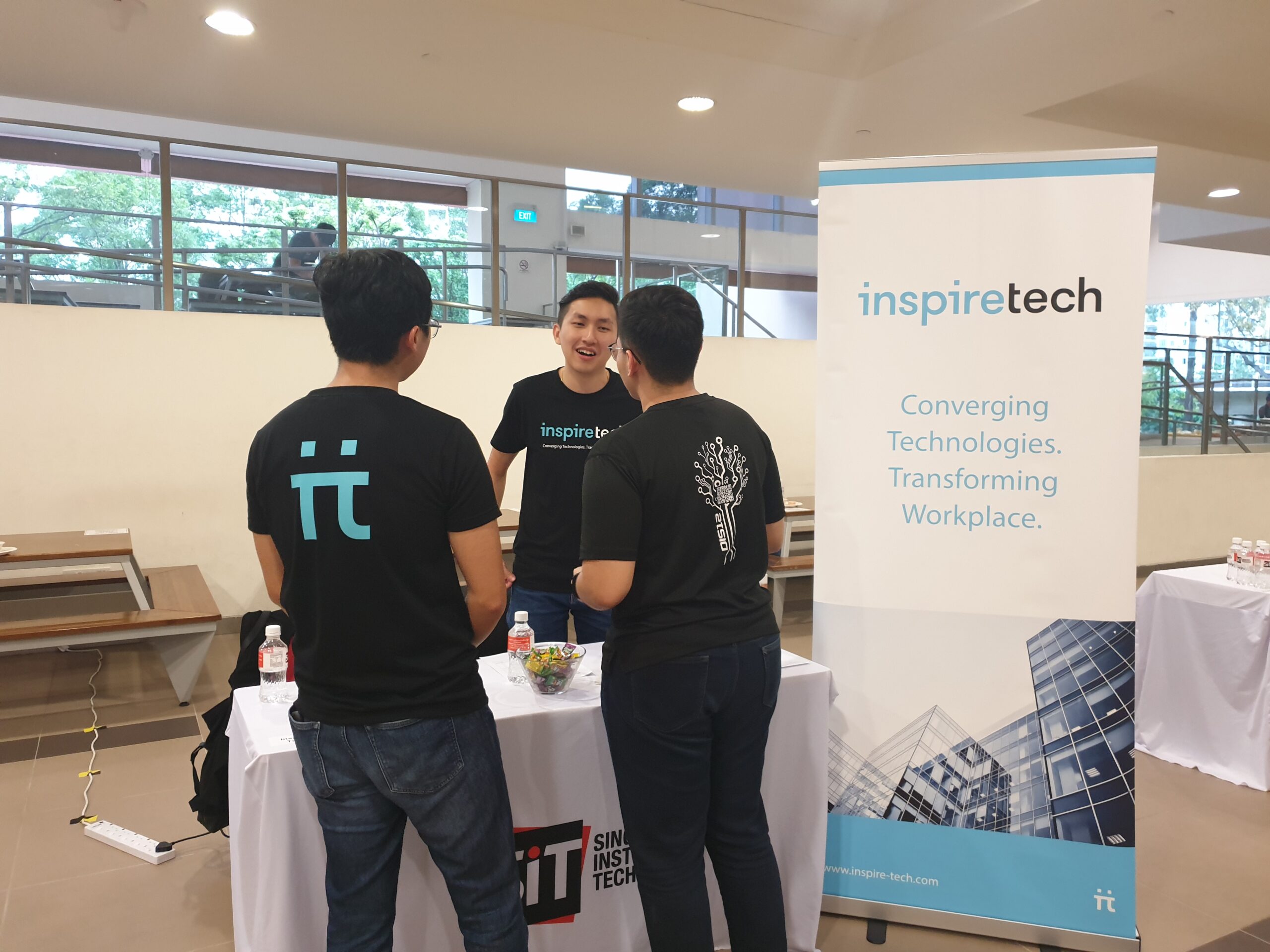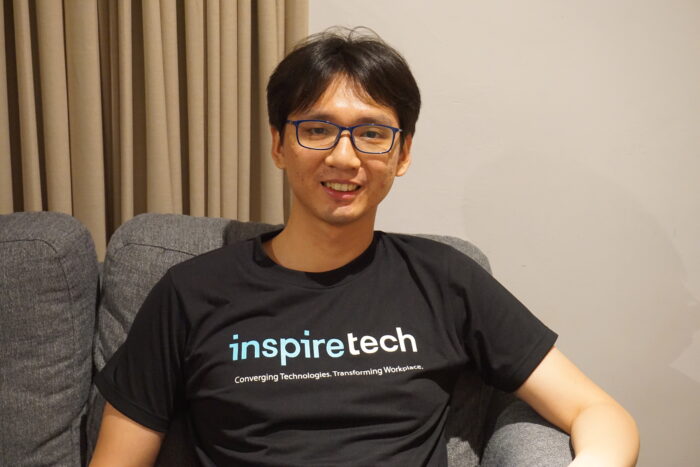SIT’s Work-Study Degree offers a win-win pathway for Inspire-Tech

Darren Sim, an SIT WSDeg apprentice from Inspire-Tech, shared his apprenticeship experience with a junior at a campus recruitment drive for WSDeg in 2020.
The Work-Study Degree (WSDeg) is part of a suite of Work-Study Programmes offered by Institutes of Higher Learning (IHLs) in Singapore, including the Singapore Institute of Technology (SIT). Since SIT’s launch of its WSDeg pathway, it has been receiving rave reviews from participating companies.
One company that has benefited from the WSDeg pathway offered by SIT is Inspire-Tech Pte Ltd, which has gained fresh perspectives and real-life work contributions from their apprentices.
Ting Teck Wei, Operations Director of Inspire-Tech, said, “SIT’s WSDeg apprentices are able to adapt and react quickly to new work situations, especially in a VUCA environment. For example, apprentices were able to quickly switch from working on an internal project to manage urgent external work from clients. They were also able to research for and help implement a company-wide data-protection project, which involved many departments such as marketing, finance, HR, and IT,” said Ting.
Mutual learning
The WSDeg pathway also creates a mutually beneficial scenario where apprentices bring what they have learnt in school back to the company, helping the company plug the gaps with the necessary knowhow. On the other hand, the students benefit from the apprenticeship pathway by honing the relevant skill sets that will not only help them in their current jobs, but for their future as well.
Moreover, when the company has a pool of apprentices who are at different development stages, the senior apprentices, especially those in their third year, can provide guidance to the junior ones. This will help the junior apprentices navigate their apprenticeship journey better.
Ting added, “Through the SIT’s WSDeg pathway, junior staff have been provided with opportunities to take on mentorship roles that would have normally been undertaken by managerial staff.”
SIT WSDeg apprentices are a cut above the rest
Ting also finds SIT WSDeg apprentices to be resilient and highly adaptable. They have good time management and problem-solving skills and can handle stress well. He attributes these traits to SIT’s trimester academic model, which may be intense but manageable. “You don’t often see such grit and adaptability, especially in interns. Having such crucial transferable skills will help WSDeg graduates increase their employability,” Ting said.
WSDeg is a good pathway to build talent pipeline
One of the most unique aspects of the WSDeg pathway is its practical-oriented, hands-on, and applied-learning approach. This approach enables third-year apprentices, after going through up to two four-month apprenticeship cycles, to be capable of handling work of a similar level as full-time employees of the company.
Since 2017, the company has been taking in apprentices under SIT’s WSDeg pathway. “The WSDeg pathway is an important way for us to build the company’s talent pipeline,” said Ting, who sees the pathway as one that establishes long-term relationships with apprentices.

“The WSDeg pathway is an important way for us to build the company’s talent pipeline.” – Ting Teck Wei, Operations Director of Inspire-Tech,
By their second year, apprentices would have discussed the job role they would like to take up for their eight to 12-month credit-bearing work attachment with their mentors, as well as what their final-year industry-based capstone project would cover.
This enables the partnering company to tap into SIT’s resources to jointly work on relevant projects, while allowing the apprentice to get a head start on gaining real-world experience, benefiting both parties. “This is a unique value proposition that other apprenticeship programmes seldom offer,” shared Ting.
“At the end, even if the apprentices do not opt to work with Inspire-Tech after they graduate, we make it a point to proactively keep in touch with them. In fact, we encourage graduates to try out roles with other companies to learn other skills,” Ting said. He believes that the deep bond developed during the three-year WSDeg apprenticeship will facilitate continued mutual learning long after the apprenticeship ends.
“We will continue to invest in this relationship so that it will help to contribute to our future talent-acquisition strategy,” said Ting, who highlighted how today’s young workers are keen to try different roles and work in different environments, especially before they reach age 30.
“I recommend other companies to take part in SIT’s WSDeg pathway. Take in more than one apprentice, preferably over different years so that the seniors and juniors can interact and exchange notes.” In turn, apprentices can provide updated information to their companies on changes, developments, and trends on the academia front. “This mutually beneficial win-win interaction is what we appreciate most out of the WSDeg pathway,” Ting concluded.



